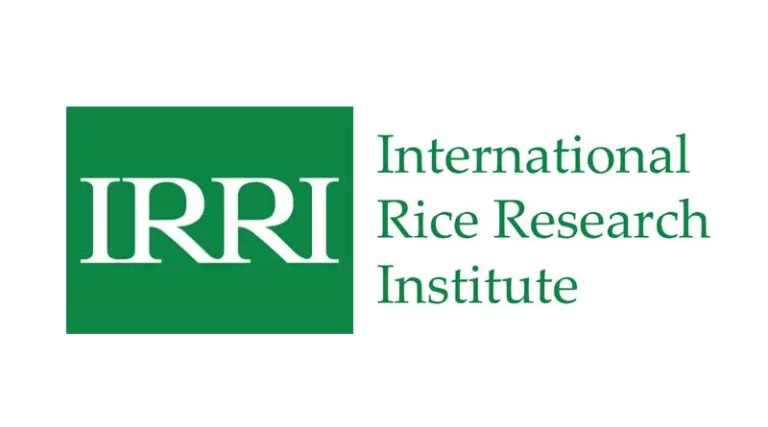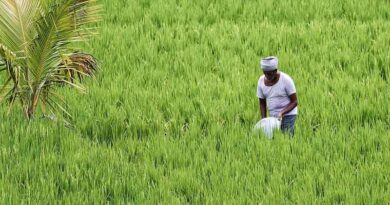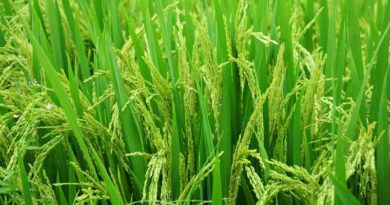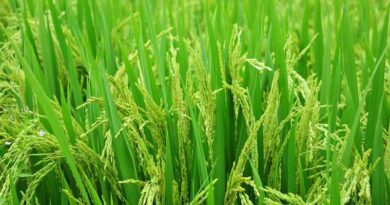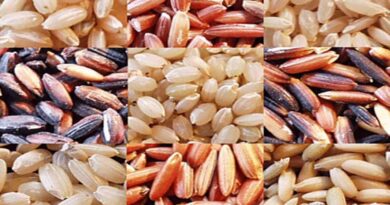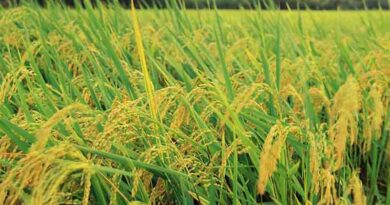How can the rice sector address the global market disruptions
Global experts on rice research and market trends convene in a webinar to share their insights and views on India’s recent export ban on non-basmati white rice. They discussed probable reasons behind the ban, its effects, and possible short- and long-term solutions, especially in relation to food security in vulnerable rice-importing countries amid the impending El Niño and the larger threat of climate change.
29 August 2023, Laguna: Amid El Niño, the impacts of climate change, and the effect of the recent India non-basmati white rice export ban in the global rice market, experts on rice research and market trends shared their perspectives and insights in a webinar hosted by the International Rice Research Institute (IRRI) on 23 August 2023 where data shows that while the market has reacted to the export ban, it has not panicked. Experts provided stakeholders information on how to navigate the challenges faced by the rice sector these days.
Discussions and reports show that India’s main reasons for the ban were domestic, including rising food prices, high inflation, and a possible rice shortage because of El El Niño. However, as India is the biggest rice exporter worldwide, the impact is being felt globally, with rice prices increasing in Asia and Africa, including the Philippines, Bangladesh, Nepal, Senegal, Togo, among others.
The experts examined different projections and estimates after the announcement of the rice export ban in July and how to address the possible challenges and impacts. Their insights were backed by data and extensive research, including those from the IRRI Global Rice Model (IGRM). The IGRM is a tool based on a partial equilibrium framework and has been used for rice trade policy studies.
In 2022, there were about 10 million tons of non-basmati white rice exports from India, said IRRI scientist-economic modeler Harold Glenn Valera. According to his simulations, there was an increase in Thai 5% brokens price of about 20 percent or equivalent to USD 110 per ton.
Valera pointed out that while the price increase was substantial, it was not as massive. “That means the market has reacted but has not panicked,” he said.
However, International Potato Center (CIP) Asia Regional Director Samarendu Mohanty said, “If India does not take any further action, or they keep the export ban on non-basmati rice until next May, global prices may go higher depending on the kharif (wet season) crop.” Rice is the major wet season crop in India.
However, Mohanty also said that further action by India such as an export tax or export ban on parboiled rice can likely create panic in the market and significantly increase prices to about USD 200 – USD 300 per ton.
Potential impact on exporters
For his part, economist David Dawe of Food Policy Analysis provided some perspective on the ban on the exporter’s side. “There’s a cost that exporters face… The first one is that it hurts their farmers, that it puts a lid on the prices received by farmers.”
He added that putting an export ban can erode the market share due to competitors coming in to fill the gap in the world market for cashing in on increased prices and for establishing supply credibility.
Dawe also said that export bans can usually decrease the size of the export market since there will be a lot of emphasis on becoming self-sufficient.
Philippine case study: Anticipating and addressing El Niño
Mercedita Sombilla, Undersecretary for Policy, Planning and Regulations of the Philippine Department of Agriculture noted that while the Philippine government is mostly concerned with the impact of El Niño which is already felt in the third quarter of 2023 and is expected to last until the first quarter of 2024, they have initiated interventions to address the (potential) impacts.
In the Philippines, as of 23 August 2023, the state weather bureau Philippine Atmospheric Geophysical and Astronomical Services Administration (PAGASA) mentioned that “moderate El Niño is present in the tropical Pacific and will strengthen further in the coming months.”
“We’re expecting harvest even before the El Niño peaks… But we still need to stock up the production with the imports,” Sombilla said. Interventions that the Philippines has initiated include encouraging the private sector to do the importation, requesting the Philippine Bureau of Customs to provide a “super green lane” to avoid bottlenecks in rice imports entering the country, and providing the same level of MFN (most-favored-nation) tariffs for countries like India, Pakistan, and other countries.
Sombilla added that importation allows countries like the Philippines to have buffer stocks for any untoward incident for at least 50 to 60 days. This buffer stock enables the country to prepare for El Niño that could affect domestic production, especially if it is going to happen in the first semester of 2024.
In addition to that Flordeliza Bordey, Deputy Executive Director for Special Concerns on the Implementation of RCEF, PhilRice, Philippines mentioned that they are about to roll out 2023 production support starting September to help local farmers. The support is for an estimated 800,000 hectares of land expected to be planted with rice.
The Philippine National Rice Program will also provide hybrid and fertilizer support to around 842,000 hectares of irrigated areas.
“We are also mainstreaming our climate change adaptation strategies as we intend to increase the production share of the dry season relative to the wet season,” said Bordey.
“We are also leveraging digital transformation to efficiently and effectively implement these strategies. Thus, with or without the export ban, the Philippine government will continue its program to improve its local production capacity,” she added.
African experience: An opportunity to harmonize agricultural and free trade policies
The African continent has experienced several commodity price shocks over the past years – in 2007, 2008, 2010, 2011, and even during the height of the COVID-19 pandemic, said IRRI-Africa Regional Director Abdel Ismail.
The India non-basmati white rice export ban hit West African countries like Senegal, Côte d’Ivoire, and Nigeria. Ismail believes that it is critical to leverage government to government trade agreements to ensure adequate rice supply in the region.
Meanwhile, in Sub-Saharan Africa, they are rethinking their strategy as they really need to improve local production.
“They have to reduce the production cost and increase competitiveness of the rice that is locally produced to be able to compete with the incoming rice from outside (the continent),” Ismail said.
Ismail also suggested that African countries need to harmonize agricultural policies and allow some kind of free trade for agricultural inputs and commodities such as rice.
Vietnam case study: Increasing productivity, rice quality amid external factors
Over the years, while the area for rice production in the country has decreased from 4.1 million hectares to 3.8-3.9 million hectares, Vietnam has managed to improve its productivity, allowing the nation to export about USD 6-7 billion worth.
Nguyen Do Anh Tuan, Director General, International Cooperation Department of the Ministry of Agriculture and Rural Development, Vietnam shared insights about using rice land for rice-shrimp, rice-fish, or rice-vegetable systems.
Anh Tuan also reiterated Vietnam’s goal to become a transparent, responsible and sustainable supplier to the world, something they have declared during the UN Food System Summit 2021.
Meanwhile, stabilizing rice prices domestically in Vietnam is composed of two main strategies centered in making sure they have enough rice supply domestically, Anh Tuan said. One is requiring exporters to reserve a certain portion of rice supply locally before exporting. This is separate from the public domestic rice reserve that the government manages, and the system that is enacted for the poor ethnic minority in the remote areas.
What’s next for the rice sector
On 25 August, Myanmar announced that it is going to restrict rice exports from 1 September to 15 October to control domestic prices, while India imposed a 20-percent duty on exports of parboiled rice. India exported about 7.5 million tons of parboiled rice in 2022 based on data from the Trade Data Monitor.
The current market disruptions pose an opportunity for the emergence of new suppliers outside Asia, such as in South America and Africa, stated Mohanty in his new blog.
“If rice producers are developed outside Asia primarily for export purposes then these countries will remain open for business under all circumstances,” Mohanty wrote. “This will also give confidence to importing countries to be dependent on imported rice and not panic when any country imposes export restrictions.”
Also Read: Farming with a hybrid AD plant approach
(For Latest Agriculture News & Updates, follow Krishak Jagat on Google News)

